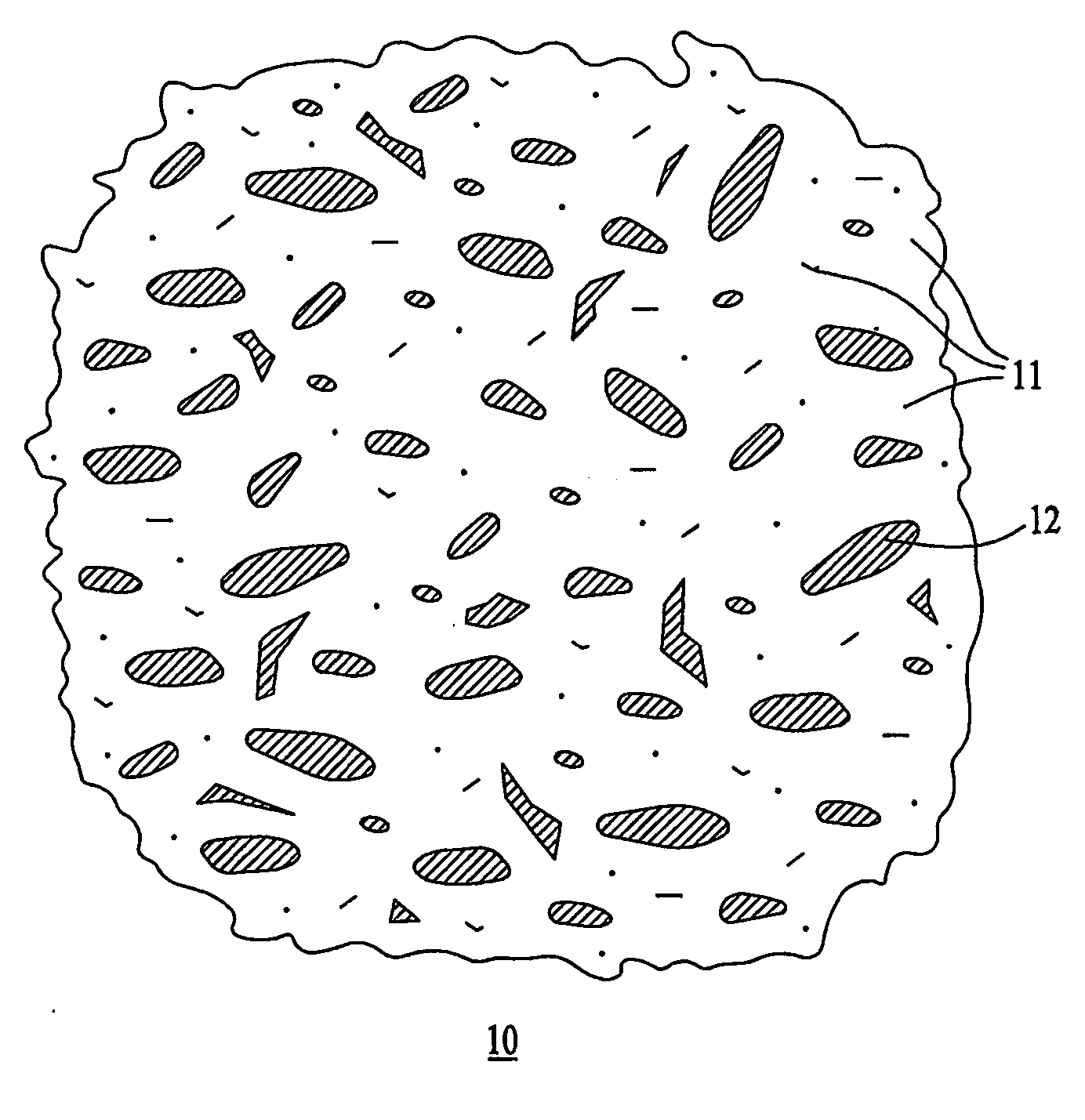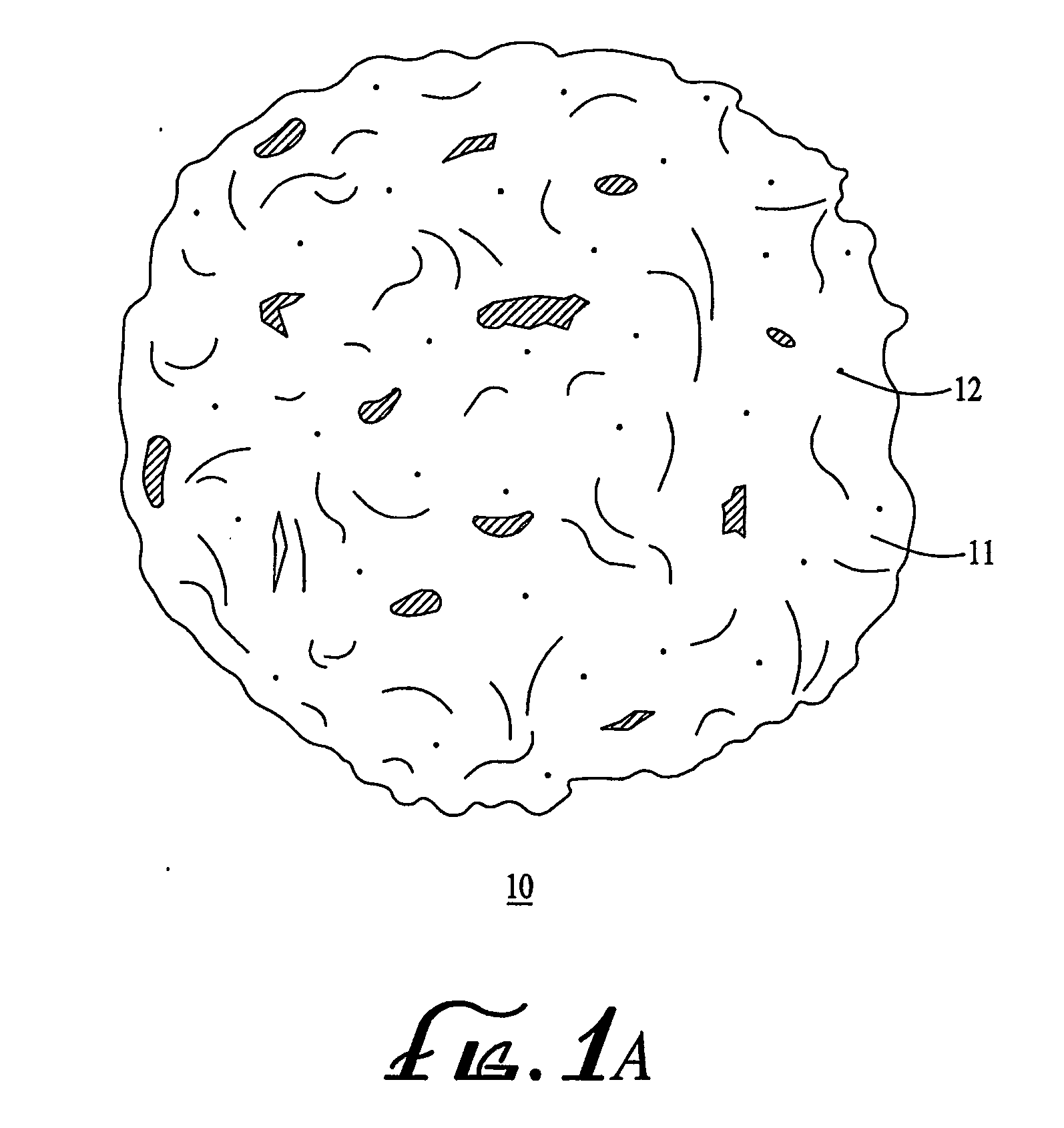Cleansing pad
a technology of cleaning pads and cleaning agents, applied in the field of cleaning pads, can solve the problems of limited cleaning action, need for adding a polymer to the detergent, and need for a liquid film forming binder for the antimicrobial agent, and achieve the effect of simplifying the process of incorporating a cleansing agent into a cleansing pad
- Summary
- Abstract
- Description
- Claims
- Application Information
AI Technical Summary
Benefits of technology
Problems solved by technology
Method used
Image
Examples
Embodiment Construction
[0040] Referring to FIGS. 1A-B, in one embodiment the present invention provides a cleansing pad 10 comprising substrate made from a web of fibers forming a pad 11 and a cleansing agent 12 applied to the pad 11 to form the cleansing pad 10.
[0041] Although the term “pad” is utilized, the web of fibers form any functionally suitable shape and size. The pad 11 can be synthetic or naturally occurring, and can comprise e.g., porous materials, Polyurethanes (including but not limited to polyester, polyether, etc.), Cellulose, sponges, etc. Polyurethane is a general classification for all polymers that are formed from polyols and isocyanates. Polyester and Polyether polyurethanes refer to a subclass of these polymers. Polyethylene and polystyrene foams are made from ethylene and styrene monomers.
[0042] Other materials for the pad 11 may include all synthetic sponge materials, woven and non-woven materials, all natural including cotton and loofah-based. In addition, each pad 11 can be mad...
PUM
| Property | Measurement | Unit |
|---|---|---|
| weight ratio | aaaaa | aaaaa |
| weight ratio | aaaaa | aaaaa |
| weight ratio | aaaaa | aaaaa |
Abstract
Description
Claims
Application Information
 Login to View More
Login to View More - R&D
- Intellectual Property
- Life Sciences
- Materials
- Tech Scout
- Unparalleled Data Quality
- Higher Quality Content
- 60% Fewer Hallucinations
Browse by: Latest US Patents, China's latest patents, Technical Efficacy Thesaurus, Application Domain, Technology Topic, Popular Technical Reports.
© 2025 PatSnap. All rights reserved.Legal|Privacy policy|Modern Slavery Act Transparency Statement|Sitemap|About US| Contact US: help@patsnap.com



